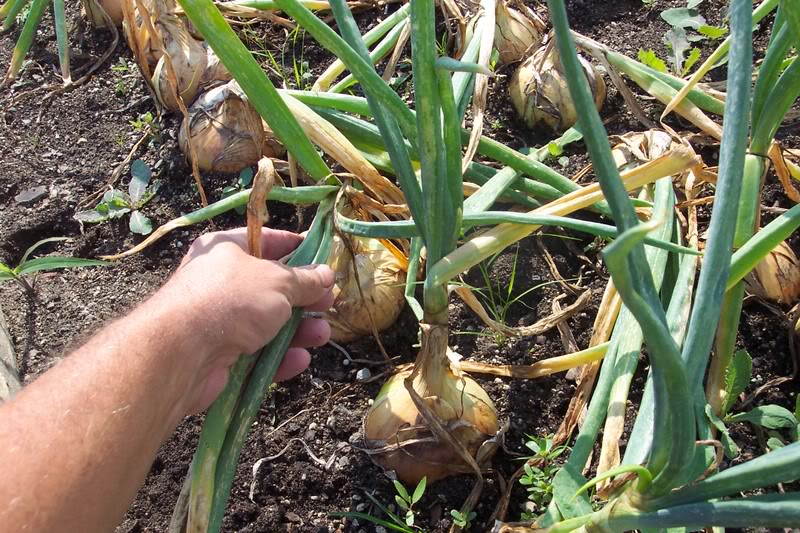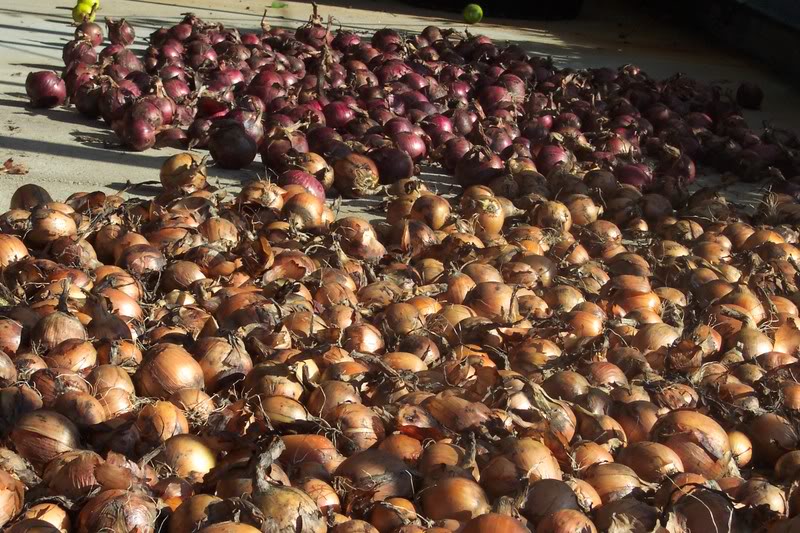With plenty of rain this season, I ended up a fairly decent crop of onions even without irrigation. Now it’s time to harvest and dry them for storage.
Onions have a built in signal to let you know when they’re ready. Once the stalks begin to fall over, they’re done. Even the ones still standing will not make any more growth.
Once the stalks have just started to dry a little bit, I dig the bulbs with the stalks still on and dry them for two or three weeks in a spot where they won’t get rained on.
There is usually a little garden soil stuck to the bulbs. I have sandy soil, most of it falls off eventually. So I usually leave the dirt on during drying unless there are large clumps hanging on.
Drying is over after the outer skin turns brown and crispy. It’s at that time when I trim off all but an inch or so of the stalk. Most of the roots get trimmed off at the same time. I have in the past left the stalks on and braided the onions. Braided onions make a great homegrown gift from the garden.
I separate the onions with extra wide necks and use them first. They don’t store as well as onions with narrow necks.
I’ve accumulated a large collection of mesh bags over the years and use them to store onions. The onions need to be kept cool but can’t be frozen. They also need good air circulation. At one time I had a special building that I kept around 45 degrees, it was perfect for onions and other crops. But those days are over and I now I keep them in my garage.
The sweet onions don’t keep well so they get eaten right away. The yellow varieties store very well, sometimes lasting almost until spring.
During the winter, some onions invariably will start to decay. Those have to be removed to keep the other onions in the bag from going bad.
As many years as I have been gardening, I still get a kick out of going to the storage area in the middle of the winter and picking out onions for the kitchen.
Bob

